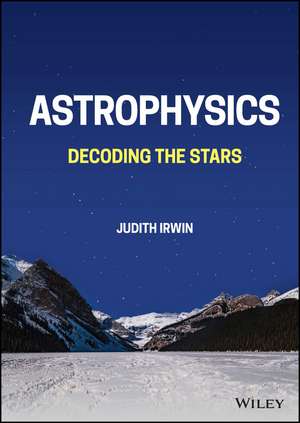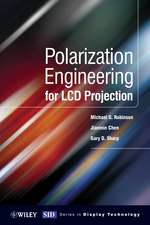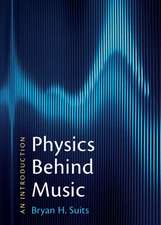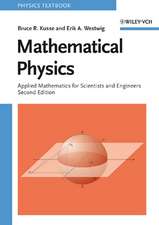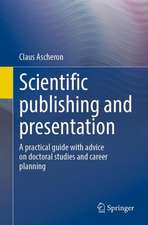Astrophysics – Decoding the Stars
Autor JA Irwinen Limba Engleză Hardback – 23 aug 2023
Preț: 411.01 lei
Preț vechi: 513.77 lei
-20% Nou
Puncte Express: 617
Preț estimativ în valută:
78.66€ • 81.26$ • 65.46£
78.66€ • 81.26$ • 65.46£
Carte disponibilă
Livrare economică 05-19 martie
Livrare express 18-22 februarie pentru 46.58 lei
Preluare comenzi: 021 569.72.76
Specificații
ISBN-13: 9781119623557
ISBN-10: 1119623553
Pagini: 368
Dimensiuni: 184 x 258 x 23 mm
Greutate: 0.92 kg
Editura: Wiley
Locul publicării:Chichester, United Kingdom
ISBN-10: 1119623553
Pagini: 368
Dimensiuni: 184 x 258 x 23 mm
Greutate: 0.92 kg
Editura: Wiley
Locul publicării:Chichester, United Kingdom
Notă biografică
Professor Judith Irwin teaches undergraduate and graduate physics, astrophysics, and astronomy in the Department of Physics, Engineering Physics and Astronomy at Queen's University, Canada. Her research focuses on gaseous halos of spiral galaxies.
Cuprins
Preface xiii
Acknowledgments xv
Introduction xvii
I.1 The Simple Physical Star xix
I.2 The Dominance of Gravity for Stars xxi
I.3 The Numerical and Analytical Star xxvi
I.4 The Theoretical and Observational Star xxviii
Problems xxxiv
1 The Closest Star 1
1.1 The Sun { First among Equals 1
1.2 The Solar Atmosphere 6
1.2.1 Physical Overview 6
1.2.2 The Photosphere 11
1.2.3 The Chromosphere 14
1.2.4 The Transition Region 17
1.2.5 The Corona 21
1.2.6 Energy Source for Heating the Solar Atmosphere 23
1.3 The Solar Interior 25
1.3.1 The Standard Solar Model (SSM) 25
1.3.2 Solar Rotation 28
1.4 The Magnetic Sun 31
Problems 38
2 The Gaseous and Radiative Star { the Basics 41
2.1 The Gaseous Star 41
vii
2.1.1 The Ideal Gas 41
2.1.2 Abundances and Metallicity 43
2.1.3 The Maxwell-Boltzmann Velocity Distribution and
Gas Temperature 46
2.1.4 The mean molecular Weight 49
2.1.5 Fractional Ionization 50
2.1.6 Pressure of a Partially Ionized Ideal Gas 54
2.1.7 Degrees of Freedom, Adiabatic Index and SpecicHeats 55
2.1.8 Adiabatic and Isothermal Gases 58
2.2.1 Gas motions and the Doppler Shift 62
2.2 The Radiative Star 64
2.3 Stellar Opacities 67
Problems 72
3 The Observed Star { Towards the Essential Parameters 77
3.1 Temperature and Spectral Type 78
3.2 Luminosity and Luminosity Class 84
3.3 Chemical Composition 88
3.4 Mass 91
3.4.1 Visual Binaries 95
3.4.2 Spectroscopic Binaries 98
3.5 Radius 101
3.5.1 Eclipsing Binaries 102
3.6 Rotation and Winds 107
Problems 113
4 The Shining Star | Interiors 115
4.1 Energy Transport in Stars 115
4.2 Radiative Transport 116
4.2.1 The Rosseland Mean Opacity 118
4.2.2 Analytical forms for the Mean Opacities 121
4.2.3 The Equation of Radiative Transport 125
4.3 Convective Transport 128
4.3.1 Condition for Convective Instability 129
4.3.2 Mixing Length Theory 134
4.4.1 Real Convection 140
4.4 Conductive Energy Transport in Dense Regions 144
Problems 148
5 The Burning Star | Cores 151
5.1 Classical and Quantum Approaches 151
5.2 Energy Generation Rate 155
5.3 Energy Release and Binding Energy 156
5.4 Main Sequence Reactions 162
5.4.1 The PP-chain 162
5.4.2 The CNO Cycle 165
5.5 Reactions after the Main Sequence 169
5.5.1 The Triple-
Process { Helium Burning 169
5.5.2 Additional and Higher Temperature Reactions 171
Problems 175
6 The Modelled Star 177
6.1 The Equations of Stellar Structure 177
6.1.1 Conservation of Mass 179
6.1.2 Hydrostatic Equilibrium 179
6.1.3 Energy Conservation 180
6.1.4 Energy Transport 181
6.1.5 Constitutive Relations 181
6.1.6 Boundary Conditions 182
6.2 Solving the Equations of Stellar Structure 183
6.2.1 Numerical Solutions 184
6.2.2 Conceptual and Analytical Approaches 185
6.3 The Vogt-Russell Theorem, Mass-Luminosity Relation, and Mass-
Radius Relation 191
Problems 202
7 The Quasistatic Star | Energies, Timescales, and Limits 205
7.1 The Virial Theorem 206
7.2 Timescales 211
7.2.1 The Dymamical Timescale 211
7.2.2 The Thermal (Kelvin-Helmholtz) Timescale 212
7.2.3 The Nuclear Timescale 214
7.3 Stability 216
7.3.1 Stability against Perturbations 216
7.3.2 Secular Evolution of the Sun along the Main Sequence 217
7.4 The Minimum and Maximum Stable Star 219
7.4.1 The Lowest Mass Stars 219
7.4.2 The Highest Mass Stars 221
7.6 A Main Sequence Primer 226
Problems 231
8 The Forming and Ageing Star { Evolution to and from the
Main Sequence 233
8.1 The Forming Star 233
8.1.1 The Jeans Criterion and Free-Fall Timescale 234
8.1.2 Real Star Formation 237
8.1.3 Protostars 238
8.1.4 From Protostar to the ZAMS 243
8.2.1 Number, Mass, and Luminosity Functions 251
8.4 The Ageing Star 256
8.4.1 Post-main sequence Evolution of a 1 M
Star 257
8.5.1 Post-main sequence Evolution of Stars of Di
erent
Mass 266
8.6.1 Connecting Theory with Observations 276
Problems 284
9 The Variable Star { Stellar Pulsation 287
9.1 Pulsation 291
9.2 Asteroseismology 296
9.4 Radial Pulsation 307
9.5 The Drivers | the Kappa Mechanism 311
9.7 Period-Luminosity Relations 314
Problems 321
10 The Dying Star, and its Remnant 323
10.1 Planetary Nebulae 324
10.2 White Dwarfs { Stellar Cinders 327
10.2.1 The Mass-Radius Relation for White Dwarfs 330
10.2.2 The Cooling Curve | A Cosmic Clock 336
10.3 Supernovae 339
10.3.1 Core Collapse Supernovae 344
10.3.2 Thermonuclear Supernovae 349
10.5 The Densest Remnants | Neutron Stars and Pulsars 353
10.5.1 The Mass-Radius Relation for Neutron Stars 355
10.5.2 Stellar Beacons | Pulsars 358
10.5.3 The P _P Relation and Characteristic Age 367
10.6 The Ultimate Stellar Remnant | Black Holes 371
10.6.1 Observational Evidence 374
Problems 378
11 A Stellar Invitational 381
A Physical and Astronomical Data 385
B The Solar Atmosphere 389
C The Standard Solar Model 395
D Taylor Expansions for the Center of a Star 401
E Chandrasekhar's Argument for a Declining Pressure Distribu-on i a Star 405
F Stellar Data 409
